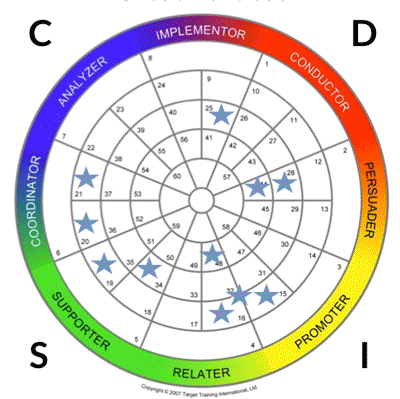Almost everyone stores their vacuums in a closet, unfortunately many companies also have leadership vacuums in their closet, and they don’t want to talk about it.
A few years ago we worked with a San Francisco firm who asks for our help understanding why the team and the leadership weren’t working as well as their other offices throughout California.
We conducted a Talent Insights assessment on the whole office and compared them to other offices who were running more smoothly. Initially we couldn’t find anything that stood out based solely on Natural Behaviors or Motivators.
When we took a deeper dive into the analysis of the reports we realized that there were several key team members who were adapting their behaviors away from their natural styles, so much so to the extent that would bring about daily stress to their work life. As if this wasn’t damaging enough to productivity, we discovered that they were all adapting their behaviors in the same direction.
As you see in the GIF below, the blue stars are the natural Behavioral styles of everyone in the office. Eight of them (who turn red) adapt to have a higher Compliance profile, while only 3 (who turn green) to adapt otherwise.

What we discovered was that all the other offices who ran more smoothly had a leader in the office with a High Compliance Behavioral style (leading from the top-left quadrant). This style is concerned with processes and procedures that maintain high level reputation of the firm. This particular office was lacking a leader in the room who was responsible for the Quality of product that was being produced.
The majority of the team members felt this lack, and were adapting their natural style to compensate for it. This unspoken, subconscious concern was hindering the productivity of the team. The lack of a leader or process in the office meant that the extremely talented staff wasn’t functioning in the way they perform best. They had to alter their performance due to the key leadership vacuum in the room. They all separately felt like they had to fill it.
What are some of the unspoken, subconscious holes in your leadership team that everyone seems to know about, and yet know one addresses. Are these little alterations that you and your team make effecting your productivity and ultimately your bottom line? What are the leadership vacuums in your closet that you can address today, instead of ignoring them and hoping they don’t hurt you too badly in the long run?




